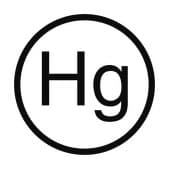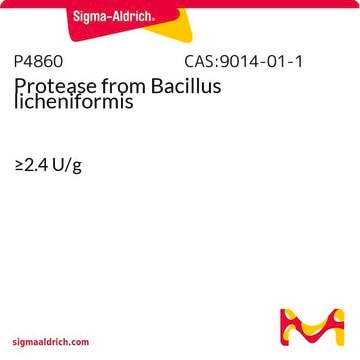481823
Mercury(II) thiocyanate
99.99% trace metals basis
동의어(들):
Mercuric isothiocyanate, Mercuric sulfocyanide, Mercuric thiocyanate, Mercury di(thiocyanate), Thiocyanic acid, mercury(II) salt
로그인조직 및 계약 가격 보기
모든 사진(1)
About This Item
Linear Formula:
Hg(SCN)2
CAS Number:
Molecular Weight:
316.75
Beilstein:
3561344
EC Number:
MDL number:
UNSPSC 코드:
12352302
PubChem Substance ID:
NACRES:
NA.23
추천 제품
분석
99.99% trace metals basis
양식
powder
기술
NMR: suitable
불순물
≤110 ppm Trace Metal Analysis
mp
165 °C (dec.) (lit.)
density
3.71 g/mL at 25 °C (lit.)
SMILES string
N#CS[Hg]SC#N
InChI
1S/2CHNS.Hg/c2*2-1-3;/h2*3H;/q;;+2/p-2
InChI key
GBZANUMDJPCQHY-UHFFFAOYSA-L
유사한 제품을 찾으십니까? 방문 제품 비교 안내
애플리케이션
Increasing interest in solid state NMR of heavy-metal nuclei results in the preparation of several Hg-thiocyanate and selenocyanate compounds as potential models.
면책조항
For U.S. Customers: Contains mercury; Do not place in trash - dispose according to local, state, or federal laws.


신호어
Danger
유해 및 위험 성명서
Hazard Classifications
Acute Tox. 1 Dermal - Acute Tox. 2 Inhalation - Acute Tox. 2 Oral - Aquatic Acute 1 - Aquatic Chronic 1 - STOT RE 2
보충제 위험성
Storage Class Code
6.1A - Combustible acute toxic Cat. 1 and 2 / very toxic hazardous materials
WGK
WGK 3
Flash Point (°F)
248.0 °F - closed cup
Flash Point (°C)
120 °C - closed cup
M A Koupparis et al.
Journal of pharmaceutical sciences, 75(8), 800-804 (1986-08-01)
An automated flow-injection determination of chloride salts of drugs, based on the colorimetric mercurothiocyanate determination of chloride counterion is described. The majority of these drugs can be determined, using chloride ion standards, with a coefficient of variation less than 1%
Bowmaker, G.A. et al.
Inorganic Chemistry, 37, 1734-1734 (1998)
Ajit Kumar et al.
World journal of microbiology & biotechnology, 31(8), 1211-1216 (2015-05-11)
Xanthobacter autotrophicus GJ10 has been widely studied because of its ability to degrade halogenated compounds, especially 1,2-dichloroethane (1,2-DCA), which is achieved through chromosomal as well as plasmid pAUX1 encoded 1,2-DCA degrading genes. This work described the gene expression and enzyme
자사의 과학자팀은 생명 과학, 재료 과학, 화학 합성, 크로마토그래피, 분석 및 기타 많은 영역을 포함한 모든 과학 분야에 경험이 있습니다..
고객지원팀으로 연락바랍니다.










